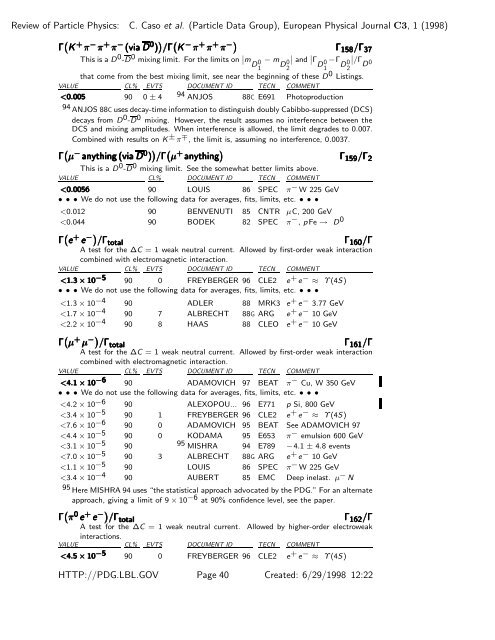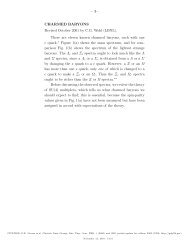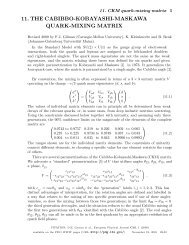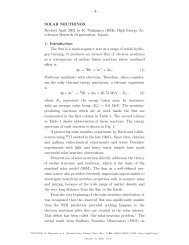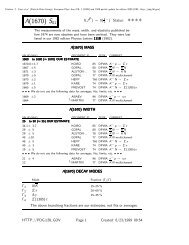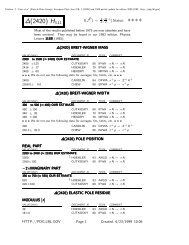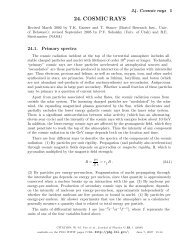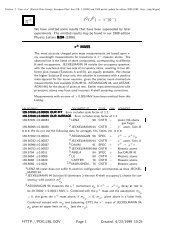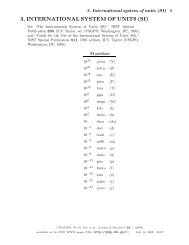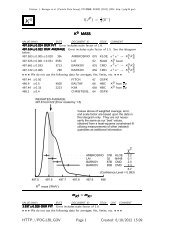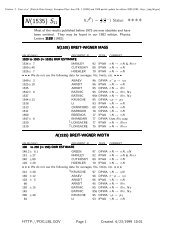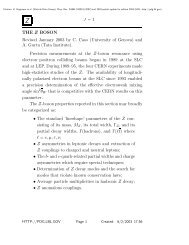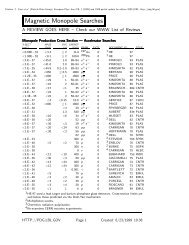Create successful ePaper yourself
Turn your PDF publications into a flip-book with our unique Google optimized e-Paper software.
Review of <strong>Particle</strong> Physics: C. Caso et al. (<strong>Particle</strong> <strong>Data</strong> <strong>Group</strong>), European Physical Journal C3, 1 (1998)<br />
Γ K + π− π + π− (via <strong>D0</strong> ) /Γ K − π + π + π− Γ K + π− π + π− (via <strong>D0</strong> ) /Γ K − π + π + π− Γ K + π− π + π− (via <strong>D0</strong> ) /Γ K − π + π + π− Γ K + π− π + π− (via <strong>D0</strong> ) /Γ K − π + π + π− Γ158/Γ37 Γ158/Γ37 Γ158/Γ37 Γ158/Γ37<br />
This is a <strong>D0</strong>-D 0 mixing limit. For the limits on <br />
m<br />
<strong>D0</strong> − m <br />
<strong>D0</strong> and<br />
1 2<br />
<br />
Γ<br />
<strong>D0</strong> −Γ /Γ<br />
<strong>D0</strong> <strong>D0</strong> 1 2<br />
that come from the best mixing limit, see near the beginning of these <strong>D0</strong> Listings.<br />
VALUE CL% EVTS DOCUMENT ID TECN COMMENT<br />


